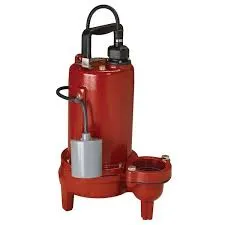Lithuanian
- Afrikaans
- Albanian
- Amharic
- Arabic
- Armenian
- Azerbaijani
- Basque
- Belarusian
- Bengali
- Bosnian
- Bulgarian
- Catalan
- Cebuano
- Corsican
- Croatian
- Czech
- Danish
- Dutch
- English
- Esperanto
- Estonian
- Finnish
- French
- Frisian
- Galician
- Georgian
- German
- Greek
- Gujarati
- Haitian Creole
- hausa
- hawaiian
- Hebrew
- Hindi
- Miao
- Hungarian
- Icelandic
- igbo
- Indonesian
- irish
- Italian
- Japanese
- Javanese
- Kannada
- kazakh
- Khmer
- Rwandese
- Korean
- Kurdish
- Kyrgyz
- Lao
- Latin
- Latvian
- Lithuanian
- Luxembourgish
- Macedonian
- Malgashi
- Malay
- Malayalam
- Maltese
- Maori
- Marathi
- Mongolian
- Myanmar
- Nepali
- Norwegian
- Norwegian
- Occitan
- Pashto
- Persian
- Polish
- Portuguese
- Punjabi
- Romanian
- Russian
- Samoan
- Scottish Gaelic
- Serbian
- Sesotho
- Shona
- Sindhi
- Sinhala
- Slovak
- Slovenian
- Somali
- Spanish
- Sundanese
- Swahili
- Swedish
- Tagalog
- Tajik
- Tamil
- Tatar
- Telugu
- Thai
- Turkish
- Turkmen
- Ukrainian
- Urdu
- Uighur
- Uzbek
- Vietnamese
- Welsh
- Bantu
- Yiddish
- Yoruba
- Zulu
Telephone: +86 13120555503
Email: frank@cypump.com
Rgp . 09, 2024 19:05 Back to list
Choosing the Right Sump Pump for Efficient Sewage Management and Flood Prevention Solutions
Understanding Sump Pumps for Sewage Management
Sump pumps play a crucial role in managing excess water and sewage in residential and commercial settings. Designed primarily to prevent flooding, these pumps are particularly important in areas prone to heavy rainfall or situated below ground level, such as basements. In this article, we will delve into the functionality, types, and importance of sump pumps for sewage management.
What is a Sump Pump?
A sump pump is a device installed in a sump pit, typically located in the basement or crawl space. Its primary function is to remove accumulated water that may eventually lead to flooding or water damage. Sump pumps can be either submersible or pedestal-style. Submersible pumps are installed underwater in the sump pit, while pedestal pumps are located above the pit, utilizing a long pipe to draw water up from below.
Functionality of Sump Pumps in Sewage Management
When it comes to sewage management, sump pumps serve a specific and essential purpose. In many cases, waste from bathrooms or laundry rooms can lead to an overflow in sewage systems, especially when lower levels of a property are involved. Here, sewage ejector pumps—often used in conjunction with sump pumps—become vital. These pumps can handle solids and effluent, pushing waste away from the home and into the municipal sewer system.
In situations where sewage can backflow, sump pumps equipped with a check valve are essential. The check valve ensures that wastewater does not flow back into the home, which can result in significant structural damage and heightened health risks due to sewage exposure.
Types of Sump Pumps
sump pump for sewage

1. Submersible Sump Pumps These are designed to be submerged in the sump pit. They are typically more efficient than pedestal pumps, as they are capable of disposing of a greater volume of water and sewage quickly.
2. Pedestal Sump Pumps While they are commonly less expensive and easier to repair, pedestal pumps can be less effective for continuous usage. They are also more exposed to contaminants, which can be an issue for sewage applications.
3. Sewage Ejector Pumps As mentioned previously, these pumps are specifically designed to handle sewage and solid waste. They are stronger and more durable than standard sump pumps due to the demanding nature of the materials they process.
Importance of Sump Pumps in Sewage Management
Investing in a sump pump system is essential for various reasons. Firstly, it prevents flooding and water damage, which could lead to costly repairs. Secondly, it protects indoor air quality by preventing mold growth, which thrives in damp environments. Thirdly, a reliable sump pump helps safeguard the health of residents, as sewage backflow can introduce dangerous pathogens into living spaces.
Regular maintenance is crucial to keep sump pumps functioning optimally. Homeowners should routinely check and test their pumps, ensuring that they are free from debris and capable of handling the necessary loads. It is advised also to have a backup power source, especially in areas that experience frequent power outages during storms.
Conclusion
In conclusion, sump pumps are an indispensable part of sewage management systems, particularly in flood-prone or lower-level areas of properties. They not only mitigate the risk of water and sewage damage but also contribute to healthier living environments. Whether through traditional sump pumps or specialized sewage ejector systems, ensuring proper installation and maintenance of these devices is vital for any homeowner or property manager. Understanding their importance can empower individuals to make informed decisions that protect their properties and promote safety.
-
ISG Series Vertical Pipeline Pump - Chi Yuan Pumps Co., LTD.|Advanced Hydraulic Design&Energy-Efficient Solutions
NewsJul.30,2025
-
ISG Series Vertical Pipeline Pump - Chi Yuan Pumps Co., LTD.
NewsJul.30,2025
-
ISG Series Vertical Pipeline Pump - Chi Yuan Pumps Co., LTD.|energy-efficient fluid handling&industrial durability
NewsJul.30,2025
-
ISG Series Vertical Pipeline Pump - Chi Yuan Pumps | Advanced Engineering&Industrial Efficiency
NewsJul.30,2025
-
ISG Series Pipeline Pump - Chi Yuan Pumps | High Efficiency, Energy Saving
NewsJul.30,2025
-
ISG Series Vertical Pipeline Pump-Chi Yuan Pumps|High Efficiency&Reliable Performance
NewsJul.29,2025










